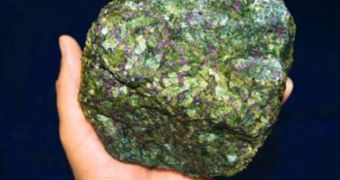Geologists have recently determined that some portions of the original crust that covered the planet when it first solidified somehow managed to escape being recycled in Earth's mantle.
This means that, if they know where to look for them, researchers could uncover remnants of the crust that appeared in the planet's formative years, as it was solidifying from a ball of molten lava.
Only the crust did so, and it continues to slip and move atop a viscous layer called the magma, which envelops the solid core. This movement is called tectonic activity.
The crust is divided into segments called tectonic plates, which slam or move away from each other, in a never-ending interaction. These events are the main driving forces behind earthquakes and volcanic eruptions.
But, as this cycle goes on to repeat itself, former crust segments slip under lighter ones, enter the mantle, and are dismembered. The chemicals making them up are then recycled into new plates.
But there are apparently some plates that have escaped this faith, and remained unscathed for billions of years, experts at the Arizona State University report.
Discovering how this happened was the main goal of a new study, which appeared in the September 2 issue of the esteemed scientific journal Nature.
The unrecycled regions of our planet's crust are called cratons, the paper reveals. They survived only due to the existence of mantle roots underneath.
These are sections of the mantle that are denser then surrounding areas, and which extend downwards similar to a tooth's root, deep inside the mantle.
“It has long been suspected, but not proven, that cratonic mantle roots are dryer than convecting upper mantle,” explains ASU expert David Bell.
He is an associate research scientist in the university's School of Earth and Space Exploration, and also at the Department of Chemistry and Biochemistry in the ASU College of Liberal Arts and Sciences.
“The presence of very small quantities of water is known to weaken rocks and minerals. During partial melting, such as that experienced by the mantle roots, water – like calcium, aluminum and iron – is also removed,” he explains.
In order to understand a planet or moon, experts need to figure out their water content, how the stuff is distributed, as well as additional data of the bodies' inner workings, and the new studies could help make this easier.

 14 DAY TRIAL //
14 DAY TRIAL //